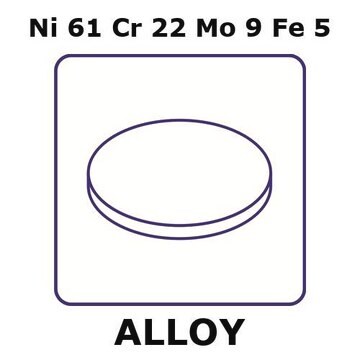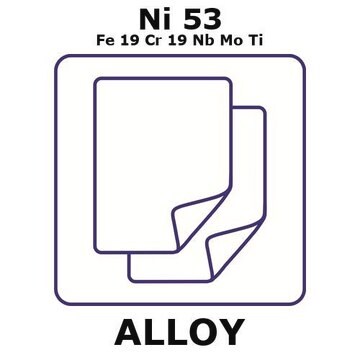GF28341840
Beryllium
wire reel, 0.05m, diameter 0.5mm, annealed and clean, 99%
Sinonimo/i:
Beryllium, BE005125, Glucinium
About This Item
Prodotti consigliati
Saggio
99%
Forma fisica
wire
Temp. autoaccensione
1198 °F
Produttore/marchio commerciale
Goodfellow 283-418-40
Resistività
4.46 μΩ-cm, 20°C
L × diam.
0.05 m × 0.5 mm
P. eboll.
2970 °C (lit.)
Punto di fusione
1278 °C (lit.)
Densità
1.85 g/mL at 25 °C (lit.)
Stringa SMILE
[Be]
InChI
1S/Be
ATBAMAFKBVZNFJ-UHFFFAOYSA-N
Cerchi prodotti simili? Visita Guida al confronto tra prodotti
Descrizione generale
Note legali
Avvertenze
Danger
Indicazioni di pericolo
Consigli di prudenza
Classi di pericolo
Acute Tox. 3 Oral - Carc. 1B - Eye Irrit. 2 - Skin Irrit. 2 - Skin Sens. 1 - STOT RE 1
Codice della classe di stoccaggio
6.1C - Combustible acute toxic Cat.3 / toxic compounds or compounds which causing chronic effects
Classe di pericolosità dell'acqua (WGK)
WGK 3
Punto d’infiammabilità (°F)
Not applicable
Punto d’infiammabilità (°C)
Not applicable
Scegli una delle versioni più recenti:
Certificati d'analisi (COA)
Ci dispiace, ma al momento non ci sono COA disponibili online per questo prodotto.
Se ti serve aiuto, non esitare a contattarci Servizio Clienti
Possiedi già questo prodotto?
I documenti relativi ai prodotti acquistati recentemente sono disponibili nell’Archivio dei documenti.
Il team dei nostri ricercatori vanta grande esperienza in tutte le aree della ricerca quali Life Science, scienza dei materiali, sintesi chimica, cromatografia, discipline analitiche, ecc..
Contatta l'Assistenza Tecnica.






